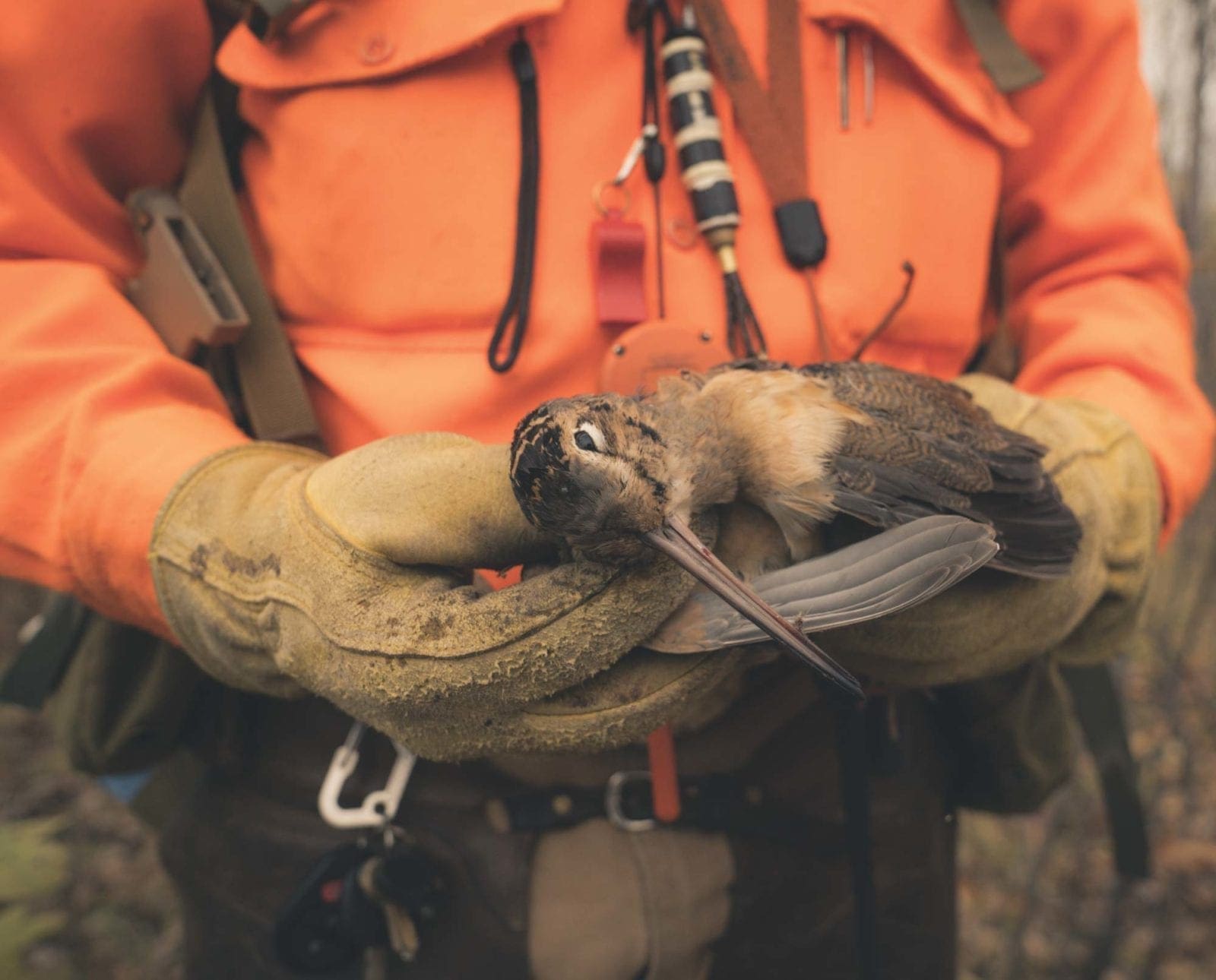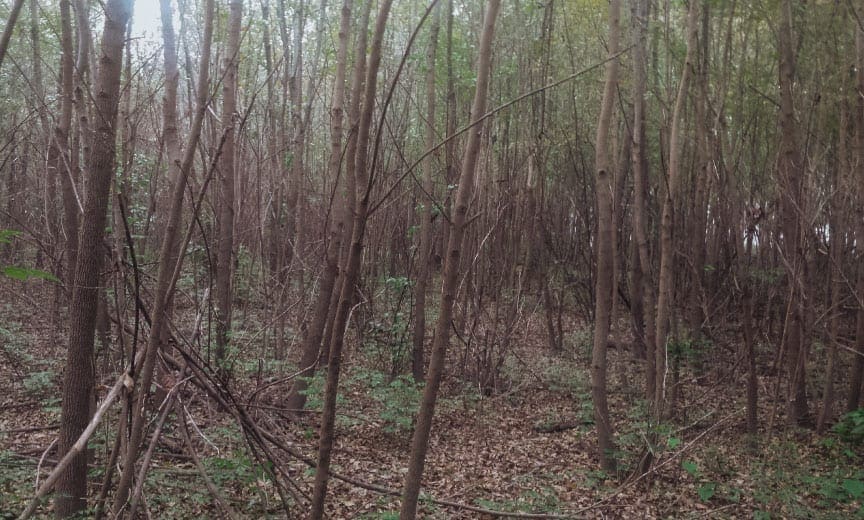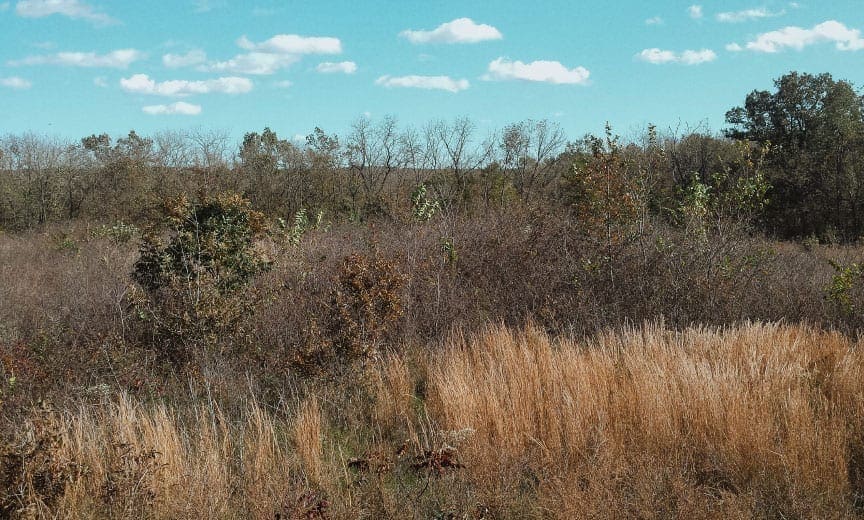Home » Woodcock Hunting » The Unrealized Opportunity of Woodcock Hunting in the Central Midwest
The Unrealized Opportunity of Woodcock Hunting in the Central Midwest

Raised in the upland bird mecca of Kansas, the passion…
Ever consider hunting woodcock in the central Midwest states as they migrate south?
When hunters think woodcock, most folks naturally have a mental picture of young aspen stands somewhere in the North Woods. Places like Wisconsin, Michigan, Minnesota, and the entire Northeast come to mind. Woodcock are migratory, so it stands to reason that all those birds that populate the grouse woods, especially in the Great Lakes region, must pass through the center of the United States at some point. States like Missouri, Illinois, eastern Kansas, and Arkansas can provide some fantastic woodcock hunting opportunities–an opportunity that most bird hunters in these states seem not to be utilizing. But for the hunters that have recognized this secret, the action can be fabulous. Maybe not Michigan fabulous, but good enough to provide excellent hunting.
According to the U.S. Fish and Wildlife’s Harvest Information Program (HIP), woodcock hunter numbers hover around 10,000 in Wisconsin and Minnesota, and over 25,000 in Michigan. Whereas HIP estimates in Missouri, Kansas, and Illinois reveal woodcock hunter numbers are around 100 or less each year, with Arkansas being slightly higher. Admittedly, hunters in Michigan can move dozens of birds in an afternoon. But when the peak flight occurs, it is possible to move double digit numbers in many Missouri coverts.
Where to Look for Woodcock in the Central Midwest
Woodcock enthusiasts will find birds in woodcock habitat that often has none of the species of trees and shrubs birds use in the North. However, one thing remains consistent: suitable structure. Stem density is the key. In these Central states, we find birds at a variety of elevations and habitat types, but all have similar stem density. Riparian zones choked with young growth of silver maple and sycamore will hold birds. Old fields overgrown with sumac, wild plum, dogwood and briars receive consistent visits by migrating birds. And maybe the best, most consistent locations are shrubby draws within large grasslands or native prairies.

Unfortunately, just like young aspen stands of the North, riparian zones of maple and sycamore don’t stay good forever. Hunters need to target stands in the 7 to 12 year age class, give or take a few years. As some areas are aging, hunters must keep an eye out for younger stands. Old fields and shrubby draws in grasslands can provide perennial hunting spots for decades. Because the woody stems in these two habitat types are shrubs rather than tree species, they can provide the proper stem density indefinitely, as long as the local management prevents succession to trees.

As with elsewhere in the woodcock’s range, these areas of proper woody stem density need a few more characteristics. The ground below the canopy of the shrubs/trees needs to have minimal grass coverage. Some grass located between shrub clumps, as is the case in old fields, is okay, but overall, the grass coverage needs to be light. Additionally, these habitats need to be in wetter areas, or at least have somewhat softer ground. Riparian zones are obviously near streams or rivers. Even in higher elevation uplands where most native prairies remain, the shrubby draws are the wettest sites across the entire prairie. Old fields can occur anywhere, but the most predictable locations are usually near some type of drainage.
When to Look for Woodcock in the Central Midwest
Each state must select their season dates based on allowable federal framework, much like waterfowl seasons. All states are limited to a maximum of 45 days of hunting. In Missouri, woodcock season runs from October 15 through November 28. In some other states, the season always opens on a Saturday, so the actual date varies annually. The Arkansas season in 2019, for example, runs from November 2 through December 16. However, just because the season is open doesn’t mean hunters will find birds. Southwest Missouri, the area we are most familiar with, rarely has birds opening day. We typically start finding birds around October 20, with the last week of October yielding more consistent trips of moving multiple birds. Our peak flights generally occur from late October through mid-November. Don’t count out the end of season either, as we have often seen birds on the last day.
An Alternative to the Bobwhite Quail
Missouri and Arkansas have appropriate habitat scattered throughout most of the states with public lands providing the majority of the proper habitat. Hunters in Kansas will need to focus their efforts in extreme eastern parts of the state. This is partially due to that portion of the state having the best woodcock habitat, but also due to Kansas being the western edge of the woodcock’s fall migration route. Illinois has birds stop over, too, with most of the best habitat located on public lands.
Most of the Central states have a woodcock season that opens before bobwhite quail season, with Arkansas being the exception. Woodcock offer upland hunters and bird dog enthusiasts opportunities to have multiple bird contacts in an outing, prior to the quail opener. Additionally, when quail and woodcock seasons overlap, woodcock can provide extra action, sometimes saving a struggling quail hunt by giving the dogs something to point or flush. When hunting grassland draws and old fields, it’s not uncommon to encounter quail and woodcock in the same cover. With today’s quail population a fraction of what it once was across most of the central U.S., getting a few extra points can help keep dogs focused, and help develop young dogs. When looking for extra dog work, possibly the best action is during the return migration. Although hunters can’t harvest any birds, it is not uncommon to move eight or 10 birds in late February through mid-March in an hour or two afield.
Woodcock, being migratory, are both a blessing and a curse. Consider a year when the quail population is low due to a bad hatch. When we go afield in early November for Missouri quail and only find a covey or two, there is no expectation that waiting a week will improve the low population. Our only solution is to drive to another location with a better population, and sometimes that may be an entirely different state. But with woodcock, if we don’t see any birds during an early outing, we know that it can improve any day. The next outing sometimes yields multiple bird contacts, where only a few days before there were none. On the other hand, about the time you call your buddies to join you because you moved several birds, they may have left by the time you arrange the hunt. The latter seems to be the story of our lives.

Want to learn more about woodcock and their migration?
The American Woodcock Society (AWS) unites conservationists, hunters and wildlife professionals to support cutting edge woodcock and migration research. As a leader in forest wildlife conservation, AWS employs a team of wildlife biologists to work with private landowners, and government, including local, state and federal, land managers who are interested in improving their land for American Woodcock and other songbirds and wildlife that have similar requirements.
Recently AWS has been supporting woodcock migration research with the use of GPS-tracking devices. Female woodcock are trapped, documented, fitted with GPS trackers and then released to complete their migrations as researchers monitor their movements. The latest research have given people a unique opportunity to learn more about a remarkable little bird.
Raised in the upland bird mecca of Kansas, the passion for upland birds was born at a young age for Kyle Hedges. He has now spent over 25 years managing upland game habitat on public lands in Kansas and Missouri for State Conservation Agencies. He also works as a Habitat Consultant for Land and Legacy, assisting landowners across the country with improving their properties.




Hunted at whetstone a couple weeks ago and jumped a woodcock that startled the daylight outta me.
Hunted my farm in north central Missouri the second weekend of Quail season. We started hunting on Thursday the 6th found quail, but no woodcock. They must of moved in on Thursday night the next day we had multiple flushes in the cover discribed by Kyle.
We had another flight come through Friday the 22nd. Hoping a few stay around for the last few days of season.
I hunt in Northeast Arkansas and it would be nice to connect with others interested in hunting woodcock. I have some good spots and a couple good GSPs.
Bryce
I am up north of Batesville in the Ozarks on the Salem Plateau geomorphic surface. I find great woodcock opportunities in the Ozark forests with moist-wet sandstone glades / seeps & wet glades brushy prairie drainages on the dip-surface of the St. Peter Sandstone areas.
I hunt with field bred English setters and field red setters.
Mike
MH.Terra.Intel@gmail.com
Radio telemetry data shows the vast majority of Northwoods birds .migrate right down through your area. It’s an absolute funnel through there.
Kyle
The dip surfaces of the sandstones have wet/ moist glade / brushy prairie meadows islands of oak / hickory forests. The soils are organic rich silica mineral souls about 1-3 inches thick and the earth worms are right at surface due to perched water tables and there are clubmoss & mint wetlands that produce wet mats like sponges,
I can log 40 plus flushes of woodcock in a morning training session over broke mature setters that know woodcock.
The young pups get excited on those timber rockets launching, the pups take some redos to get the wild birds down,
Too much fun!!!
I count the birds in my wet meadows inside the oak forests during the days and also use a lamp to go check on my horses/ I count the birds holding in my wet pastures at night right after full darkness.